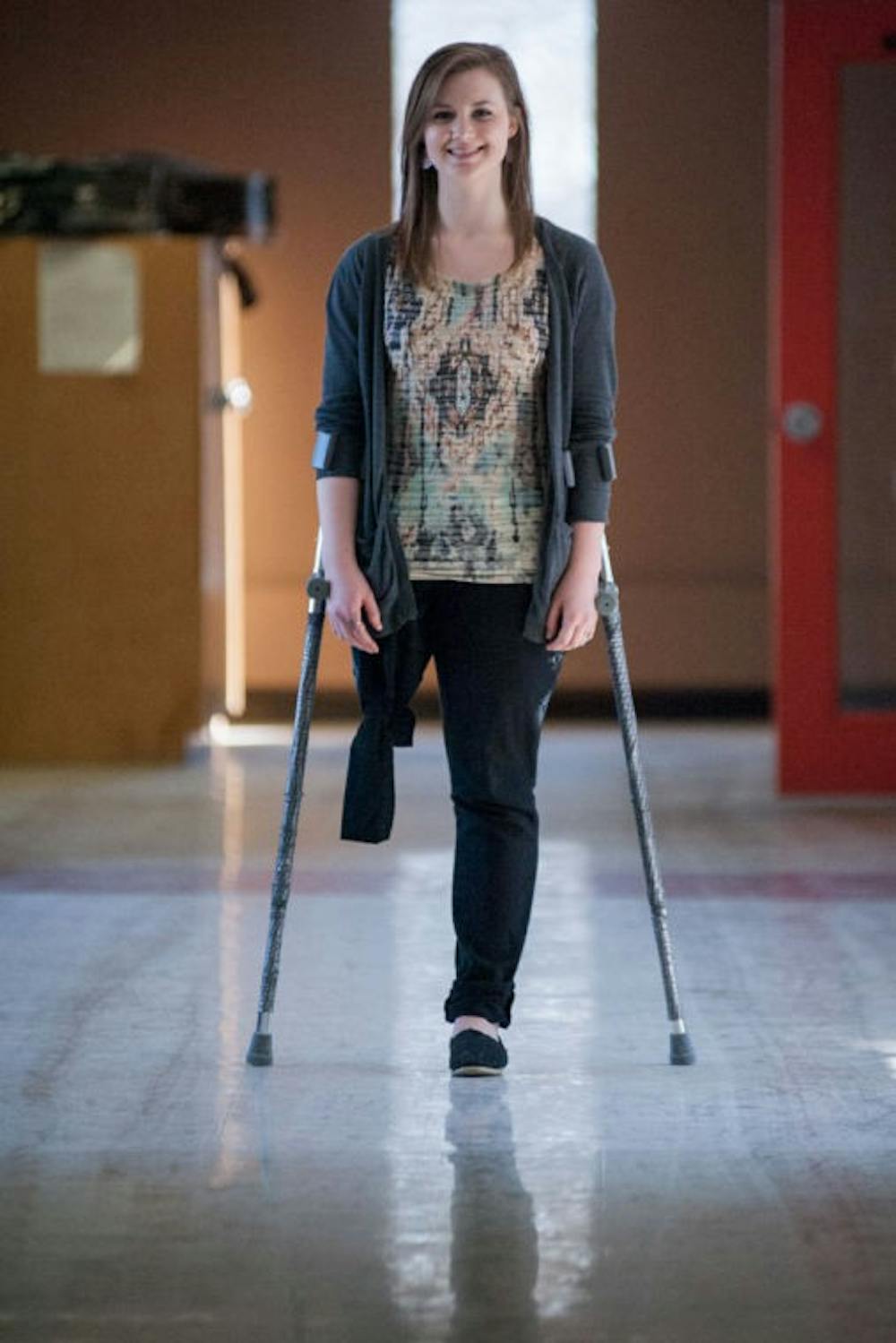Sara Richardson was 10 when she was first diagnosed with osteosarcoma, an aggressive bone cancer that most commonly affects teens.
Chemotherapy wasn’t working. She had multiple relapses in her right leg. When she was 14, she relapsed again, this time with tumors in her knee and hip. Doctors told her she had less than a 10 percent chance of survival and wasn’t expected to live through the next five years. Her best option was amputation.
“For the most part during my treatment, I had felt assured that I wouldn’t lose my leg and would still be ‘normal,’” she said. “I would see amputees and think that was the worst thing that could happen. I thought I’d be bound to a wheelchair, and I thought my life would be miserable.”
After several months of mental and emotional preparation, Richardson had the amputation.
Richardson, now a junior studying music therapy, has been cancer-free for seven and a half years and credits her experience for helping her choose her major.
Music became an important part of her life in the months leading up to the amputation as she turned to songwriting to help her cope. She battled phantom pains for a year following the amputation, which made her feel like her foot was still there.
“I was taking medicine, but that wasn’t helping because it’s not real pain; it’s my brain thinking it was there,” she said. “Really the only thing that would help it was music. I would listen to music every night, and it would ease the pain so I could go to sleep.”
After learning about music therapy and meeting professors at Ohio University, Richardson decided the program was right for her.
“The more I study it and learn how music affects our brain, it’s really exciting, because I’m understanding why music helped me so much,” she said. “Every day I’m more confident that music therapy is what I need to be in.”
There hasn’t been much research between phantom pain and music therapy though, because there is not a singular theory about why phantom pain happens, nor is there one treatment to help, Richardson said.
Music therapy can help with physical, psychological, cognitive, behavioral and social functioning needs, said Debra Cordell, visiting assistant professor of
music therapy.
“(For phantom pains) I think music can be used as a distraction from pain, as well as a reinforcement for relaxation, which reduces the perception of pain,” she said. “Because music is a powerful and non-threatening medium, unique outcomes
are possible.”
Since Richardson had the amputation, she said she prefers to use her crutches instead of the prosthesis because it’s painful and hard to use on uneven surfaces. She’s been able to stay active and participates in adaptive sports from skiing to soccer to rock climbing.
“I have had a lot of awesome opportunities to prove that there is very little I can’t do,” she said.
“Sara is amazingly determined and resilient,” said Victoria Mark, a junior studying music therapy, who met Richardson through the music therapy program. “She is so motivated to not just do well, but excel at everything she does,” Mark said. “She has been through so much and doesn’t let it be a weight, instead, she uses it to strengthen her.”
Richardson said holding on to the faith that there was a purpose for everything helped her get through tough moments.
“I’m not going to say that it was worth it and that I would do it again,” she laughed. “But it definitely enriched my life and led me here.”
@thisisjelli
ao007510@ohiou.edu






